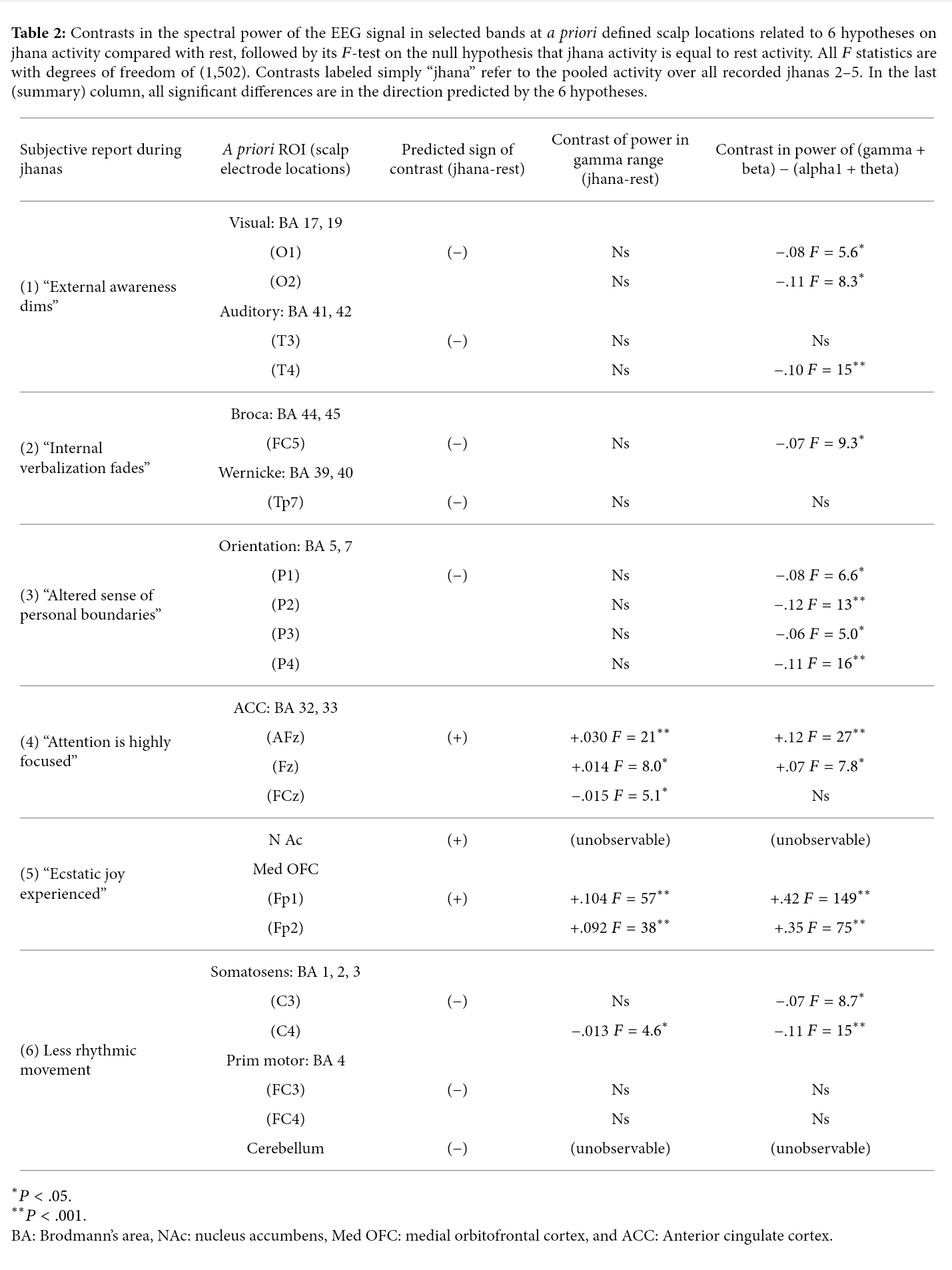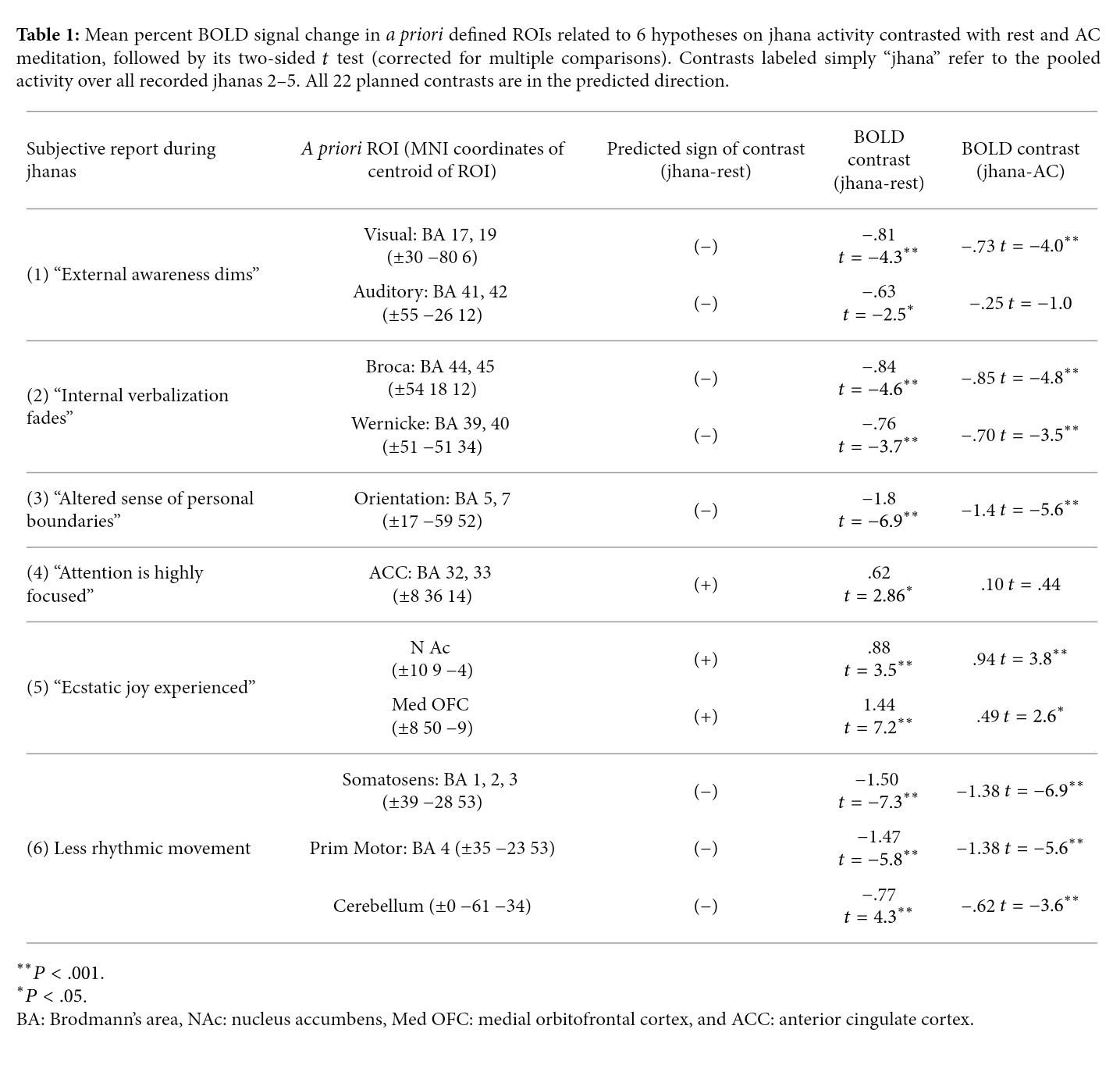I came across this research article "Case Study of Ecstatic Meditation: fMRI and EEG Evidence of Self-Stimulating a Reward System" about the brainwaves when a Yogi went into a meditative level.
I know that we have 5 types of brainwaves:
- Gamma 40Hz~
- Beta 14-40Hz
- Alpha 7.5-14Hz
- Theta 4-7.5Hz
- Delta 0.5-4Hz
As for Meditative Stages, we have 8 stages:
Material
- Jhana 1
- Jhana 2
- Jhana 3
- Jhana 4
Immaterial
- Jhana 5 / Arupa Jhana 1
- Jhana 6 / Arupa Jhana 2
- Jhana 7 / Arupa Jhana 3
- Jhana 8 / Arupa Jhana 4




As for what I've read on the paper, they could only start from Jhana 2 as "Jhana 1 was not practiced because the associated head movements would induce excessive artifact". Until Jhana 5 as there is some problem with Jhana 6-8 because the "fMRI recording then ended due to scanner memory limitations (421 volume maximum)".
How can I transform each meditative states [time-series data] into brainwaves frequencies?